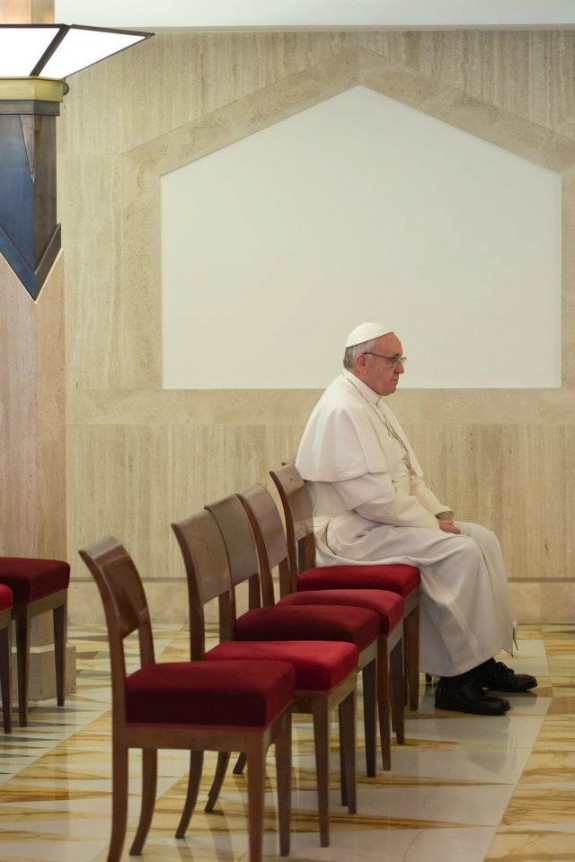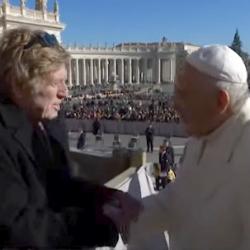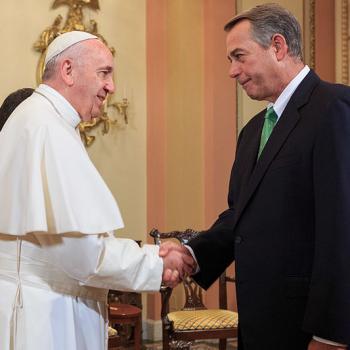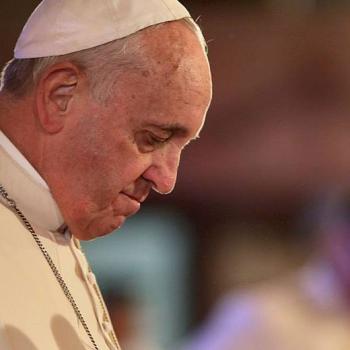From Vatican Insider:
Francis’ alarm clock goes off at 4:45 every morning in room 201 in St. Martha’s House, when everything is still pitch black. Such an early start to the day means Francis has to have a siesta after lunch. Juan Perón called this time of rest an “almost liturgical must” which made it possible for him to fit “two mornings” into his day.
The first few hours of Francis’ day are dedicated to prayer and meditation on the Readings which the Pope comments on, in the brief homilies he gives in his morning masses in the chapel of the place he likes to call the “boarding school”, commonly known as St. Martha’s House: a simple and modern building decorated with light-coloured marble and stained glass. The Bishop of Rome sits in the pews at the back of the chapel to pray.
These spontaneous but not completely improvised morning preachings are one of the most important changes of the new pontificate. And this is where the third leg of our journey begins. The Pope is assisted by cardinals, bishops or visiting priests and the masses are attended mostly by Vatican staff – from IOR staff to rubbish collectors – and their families. Francis greets all of them one by one and then has breakfast in the St. Martha’s House “common room”. For Francis, being with people and hugging them one by one is in no way a chore or a waste of time: in Argentina he would spend whole nights listening to confessions without wearing his cardinal’s insignia, so anonymously, when big pilgrimages to Our Lady of Luján would take place.
The man who deals with requests to participate in the Pope’s morning masses and sends out invitations is a priest from the northern Italian city of Bergamo, Fr. Tino Scotti. The Pope/parish priest breaks the Gospel down for and with the faithful who attend the mass, in such a way that Vatican Radio is able to provide a summary of what Francis said, just two hours later. This has helped make these morning celebrations popular across the world. Bergoglio is a big admirer of Argentinean writer Jorge Luis Borges, who once invited him to the high school where he was teaching, so his pupils could meet him. Every morning Francis comes up with new and effective illustrations to his messages, such as the “babysitter” church, the concept of “God spray”, confession not being like a “dry cleaner’s”, “sitting room Christians”, “museum-piece Christians” and “starch-pressed Christians”. Then there are his references to “prayers of courtesy”, the “balm of memory”, “adolescent progressivism” and “pastoral customs” which instead of fostering people’s faith, complicate it.
But the most striking thing about Francis is the simplicity of his words. Particularly those about tenderness and forgiveness: “The message of Jesus is mercy. For me, I say this humbly, it is the Lord’s most powerful message.” This message has encouraged people across the world to return to the Church and to confession after years of estrangement.
“The Pope preaches like he used to do in Buenos Aires and no one in the history of the Church has broken down the Gospel as he does. We have still not realised the theological significance of this. People are aware that these are not just abstract reflections,” the founder of the Bose community, Enzo Bianchi told Italian newspaper La Stampa.
There’s much more. Check it out.












